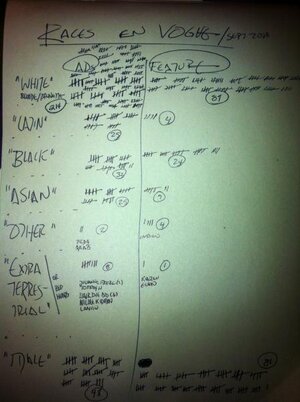@Anonymous Bullcock, @FashionThin, @SugarFree, @Artemis, @Agytha, @71000, @Babydoll, @Apple
http://www.vogue.co.uk/news/2013/09/16/iman-racism-row-diversity-coalition-brands-named
So this came up today in which Iman accuses a few brands that are guilty of racism and she singled out Pheobe Philo (designer of Celine) for not using coloured models ever.
Thoughts?
p.s. I tagged VIPs but feel free for all to share your views.
http://www.vogue.co.uk/news/2013/09/16/iman-racism-row-diversity-coalition-brands-named
So this came up today in which Iman accuses a few brands that are guilty of racism and she singled out Pheobe Philo (designer of Celine) for not using coloured models ever.
Thoughts?
p.s. I tagged VIPs but feel free for all to share your views.
Last edited by a moderator:



